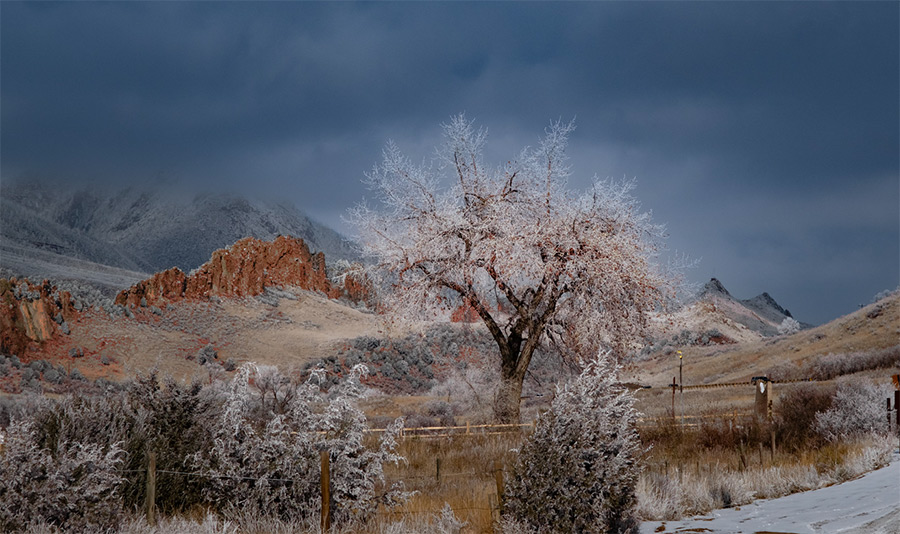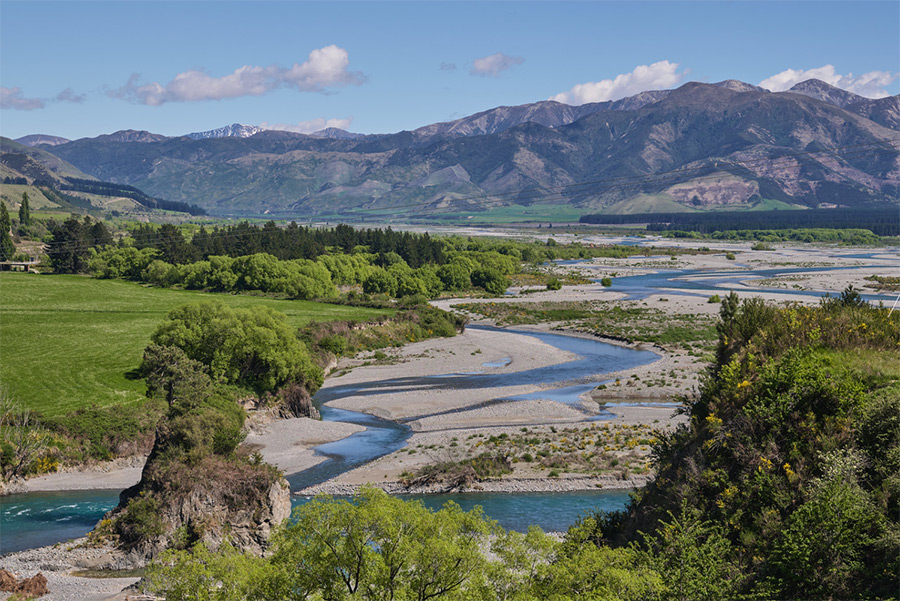In this review, I’m going to compare the Tamron 17-70mm f/2.8 Di-III A VC RXD versus Fujifilm 16-80mm f/4 R OIS WR to find out which one is better for the money.
Tamron 17-70mm f/2.8 Di VC RXD
- Focal Length: 17-70mm
- Max Aperture: f/2.8
- Mount: Fujifilm
- Stabilized: ✔️
- Weather-Sealing: ✔️
- Weight: 525g
- Released: 2023
- Amazon ($$)
Fujifilm 16-80mm f/4 R OIS WR
- Focal Length: 16-80mm
- Max Aperture: f/4
- Mount: Fujifilm X
- Stabilized: ✔️
- Weather-Sealing: ✔️
- Weight: 440g
- Released: 2019
- Amazon ($$)
They both occupy a similar focal length space, and are aimed at all-around photography. They’re not the most compact, or the cheapest options out there, but they do share a lot of similarities!
In this comparison, I will also go over how they both compare at different photography types, along with a detailed table of their most important features.
If you’re in a hurry, the advantages below are all you need to make the final decision.
Advantages of Tamron 17-70mm f/2.8 Di III-A RXD VC
Advantages of Fujifilm XF 16-80mm f/4 R OIS WR
Now, let’s see which features and advantages are actually important for your specific needs and which ones only sound good on paper.
Tamron 17-70mm vs Fujifilm 16-80mm: Detailed Comparison
🔭 1. Focal Length
- Tamron 17-70mm: From 17mm to 70mm
- Fujifilm 16-80mm: From 16mm to 80mm
- Winner: Fujifilm 🏆
The Fujifilm 16-80mm f/4 R OIS WR offers noticeably more zoom, making it much more versatile for all-around photography.
The difference between 16 and 17mm is definitely small, but can be an advantage if you do a lot of landscape or interior photography. At such low/wide numbers, every millimeter captures a little bit more in your scene.
On the telephoto end, having 10mm longer zoom is beneficial for situations where you can’t get too close to your subject. Both lenses will give you nearly the same field of view, but the Fujifilm simply allows you to get that little bit closer/wider.

🎥 2. Maximum Aperture
- Tamron 17-70mm: Constant maximum aperture of f/2.8 at all focal lengths
- Fujifilm 16-80mm: Constant maximum aperture of f/4 at all focal lengths
- Winner: Tamron 🏆
The Tamron 17-70mm f/2.8 Di VC RXD lets in 1 stop more light, which results in images that are twice as bright at the maximum aperture.
This makes it much better for low light, indoors and night time photography. It’s also good for blurring the background, as bigger apertures create a shallower depth of field.
The biggest question you’ll have to ask is; do you go for a constant f/2.8 with the Tamron, or slightly more zoom capability with a fixed f/4 aperture? If you don’t care about low light photography, you can go with the Fujifilm lens.
📏 3. Dimensions & Weight
- Tamron 17-70mm: 525g
- Fujifilm 16-80mm: 440g
- Winner: Fujifilm 🏆
The Fujifilm 16-80mm f/4 R OIS WR weighs 85g grams less than the Tamron 17-70mm f/2.8 Di VC RXD.
Both lenses feel equally heavy, but coupled with other accessories in your camera bag, that 85g (0.3lb) can eventually make a difference.
If you’re looking for a truly compact all-around zoom lens for your Fujifilm, I recommend you check out my Sigma 18-50mm f/2.8 DC DN vs Fujifilm 16-50mm f/2.8-4.8 R LM WR comparison.
- Tamron 17-70mm: 74.6 x 119.3mm
- Fujifilm 16-80mm: 78.3 x 88.9mm
- Winner: Fujifilm 🏆
The Fujifilm 16-80mm f/4 R OIS WR is almost 40mm (1.57″) shorter than the Tamron 17-70mm f/2.8 Di VC RXD.
Nothing major to compare here, but lenses will take up some space, but that’s understandable considering their all-around purpose.
🎥 4. Minimum Aperture
- Tamron 17-70mm: f/16
- Fujifilm 16-80mm: f/22
- Winner: Fujifilm 🏆
The Fujifilm 16-80mm f/4 R OIS WR can stop down up to f/22, which is 1 stop smaller than f/16 on the Tamron 17-70mm f/2.8 Di VC RXD.
Is this a big deal? No, but in those rare situations where you might need to shoot with such a small aperture, it’ll block more light and provide a greater depth of field. You’ll be able to get even more in complete focus, which is useful for landscape photography or time lapses without an ND filter.

🔬 5. Minimum Focusing Distance
- Tamron 17-70mm: Minimum focusing distance of 19cm
- Fujifilm 16-80mm: Minimum focusing distance of 35cm
- Winner: Fujifilm 🏆
A shorter minimum focusing distance allows you to get much closer to your subject. Remember, these distances are measured from your camera’s sensor and not from the front of the lens.
The Tamron 17-70mm f/2.8 Di VC RXD offers an incredible 19cm minimum focusing distance. This is excellent for macro and close-up photography of details, products, flowers and similar.
Fujifilm 16-80mm can “only” focus at 35cm or further, which is still okay but far from anything worth mentioning.
⛅ 6. Weather-Sealing
- Tamron 17-70mm:✔️
- Fujifilm 16-80mm: ✔️
- Winner: Tie
Both lenses are completely weather-sealed. For photographing in difficult weather (blizzards, near waterfalls, humid areas), it helps having a lens that won’t break down.
The Fujifilm 16-80mm f/4 R OIS WR feels a bit better in hand, but as far as their weather-resistance goes, there should be no difference.
For casual use, all lenses can handle a normal amount of rain, snow and dust.
🎦 7. Image Stabilization
- Tamron 17-70mm: ✔️
- Fujifilm 16-80mm: ✔️
- Winner: Tie
Image stabilization helps make your images appear less blurry when shooting with slow shutter speeds.
Again, both lenses come equipped with stabilization technology, which is especially useful when shooting at 70mm or 80mm. The longer the focal length, the more obvious any shake will be.
If your Fujifilm mirrorless camera offers built-in stabilization, then you’ve got nothing to worry about anyways.
For recording videos, image stabilization can also help reduce some shake and jitter, although the positive effects are more obvious when taking pictures.
💿 8. Aperture Blades
- Tamron 17-70mm: 9 rounded diaphragm blades
- Fujifilm 16-80mm: 9 rounded diaphragm blades
- Winner: Tie
A lens with more diaphragm blades will usually produce smoother bokeh, aka background blur.
Both Fujifilm and Tamron feature a 9 diaphragm rounded design, which results in okay looking bokeh.
📽 9. Filter Size
- Tamron 17-70mm: 67mm filter size
- Fujifilm 16-80mm: 72mm filter size
- Winner: Fujifilm 🏆
The Tamron 17-70mm f/2.8 Di VC works with 67mm filters. These aren’t the cheapest, but are very common and quite affordable.
For the Fujifilm 16-80mm f/4 R OIS WR, you’ll have to spend a little bit more money. If you need UV, ND and Polarizing filters, this extra cost can add up quite quickly. Still, 72mm is very common and somewhat affordable, depending on which filter company you’re going with.
If you already have a lot of filters, it’s often wise to consider a lens that uses the same filter size as your current gear. This way, you don’t have to buy a ton of new filters, something that many videographers need to keep in mind.
💲 10. Price
- Tamron 17-70mm: ~$799
- Fujifilm 16-80mm: ~$799
- Winner: Tie
Both lenses can often be found for as low as $599 or $699, but generally speaking, you’ll have to pay $799 for either of them.
They both have weather sealing and image stabilization, and are fairly similar in terms of portability. The biggest differences are the f/2.8 aperture, overall focal length reach, minimum focus distance and an aperture ring.
Tamron 17-70mm vs Fujifilm 16-80mm: Photography Type
From 1 being worst, 5 being the best.
It’s best to choose a lens that suits your favorite photography types, or offers you something that your current gear is not good enough for.
As you can see, both lenses are nearly identical for most types of photography.
The 18-50mm and 17-70mm focal length is ideal for traveling and all-around photography. This includes portraits, landscape and even regular sports photography.
Tamron 17-70mm vs Fujifilm 16-80mm: Comparison Table
Better specifications are highlighted in green.
| 🎥 Lens Specification | Tamron 17-70mm f/2.8 | Fujifilm 16-80mm f/4 |
|---|---|---|
| Focal Length | 17-70mm | 16-80mm |
| 35mm Equivalent | 25.5-105mm | 24-120mm |
| Mount | Fujifilm X (APS-C) | Fujifilm X (APS-C) |
| Maximum Aperture | f/2.8 | f/4 |
| Minimum Aperture | f/16 | f/22 |
| Filter Size | 67 mm | 72mm |
| Maximum Magnification | 0.21x | 0.25x |
| Minimum Focus Distance | 19 cm | 35cm |
| Aperture Ring | No | Yes |
| Focus Type | Autofocus | Autofocus |
| Motor Type | Stepper Motor | Linear Motor |
| Lens Construction | 16 elements in 12 groups | 16 elements in 12 groups |
| Aperture Blades | 9 (rounded) | 9 (rounded) |
| Image Stabilization | ✔️ | ✔️ |
| Weather Sealing | ✔️ | ✔️ |
| Dimensions (mm) | 74.6 x 119.3mm | 78.3 x 88.9mm |
| Weight (g) | 525g | 440g |
| Hood Included | No | Yes |
| Released | 2023 | 2019 |
| Price | Amazon | Amazon |
So, which lens is the better one?

Choose the Tamron 17-70mm f/2.8 if:
- You often shoot in low light (weddings, events, night time)
- You often shoot macro, close-up detail photography
Choose the Fujifilm 16-80mm f/4 if:
- You want 2mm wider and 10mm longer focal length zoom
- You prefer using a manual aperture ring on the lens itself
- You want an almost 100g lighter setup
- You often need f/22 for landscape, time-lapses or videos
Seeing as they both cost the same, the decision really comes down to these few points. Do you want f/2.8 ormore zoom?

